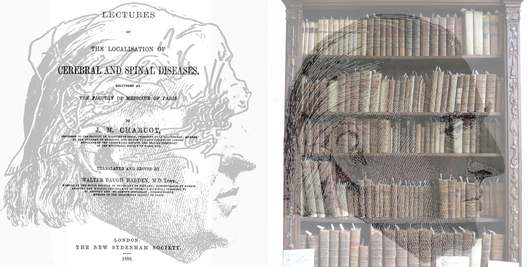Jean-Martin Charcot1825–1893
Charcot was an established neurologist who lent respectability to the study of hypnosis. Mesmer’s animal magnetism had been made partially acceptable in medical circles by its use as an anaesthetic by James Braid (1795-1860), under the name of hypnosis. Its study had continued in Nancy, where Hippolyte Bernheim (1840-1919) had hypnotized a wide range of patients often alleviating their symptoms. Bernheim considered that all individuals were susceptible to hynotism but to varying degrees, and that suggestion was a valuable aid to healing. This psychological interpretation was opposed by Charcot, who linked hypnosis to hysteria. Hysteria was taken to be an organic condition even though there was no evidence to support it: “We have here unquestionably one of those lesions which escape our present means of anatomical investigation, and which, for want of a better term, we designate dynamic or functional lesions”. He argued that only hysterical patients could be hypnotized. Charcot classified different types of hysteria (traumatic and major) and he described the hypnotic stages through which his hysterical patients passed - lethargy, catalepsy, and somnambulism. He eventually conceded that Bernheim’s interpretation was more sustainable than his own. Charcot was born in Paris, where he spent most of his life. He opted for a career in medicine after contemplating life as an artist; he studied at the hospital which Pinel had transformed from a prison, the Salpêtrière. Later, in the same institution, he occupied the first chair of diseases of the nervous system ever created. Again like Pinel, he was a highly skilled clinician who added greatly to the classification of nervous diseases. He was also a gifted teacher who demonstrated the art of diagnosis with patients in the presence of his students. His lectures became celebrated and attracted students from around the world. Freud attended in 1885-1886; he was greatly influenced by Charcot and held him in very high regard. Charcot was, with Broca, a staunch supporter of cerebral localization, and he dealt with aphasia at length in his lectures. He related clinical symptoms to brain autopsies and developed the clinical-anatomical method. On the left, Charcot’s portrait is shown together with a drawing of an hysterical patient in a classical posture - l’arc de cercle, together with the title page of his Lectures. It is the same hysterical crisis that is represented in the famous painting by André Brouillet of “A clinical lecture at the Salpêtrière” in which Charcot demonstrates hypnosis to a group of students, including Freud and Janet. Moreover, a painting in the background of the lecture room displays a patient in this same posture. It is likely that the repeated demonstration of the same patient passing through the same hypnotic states in a room with adequate visual guidance for mimicry led Charcot to his erroneous conclusions about hypnosis and hysteria. Charcot’s library at the Salpêtrière has been retained as a museum, and the illustration on the right represents Charcot in one of the bookcases in the library.
